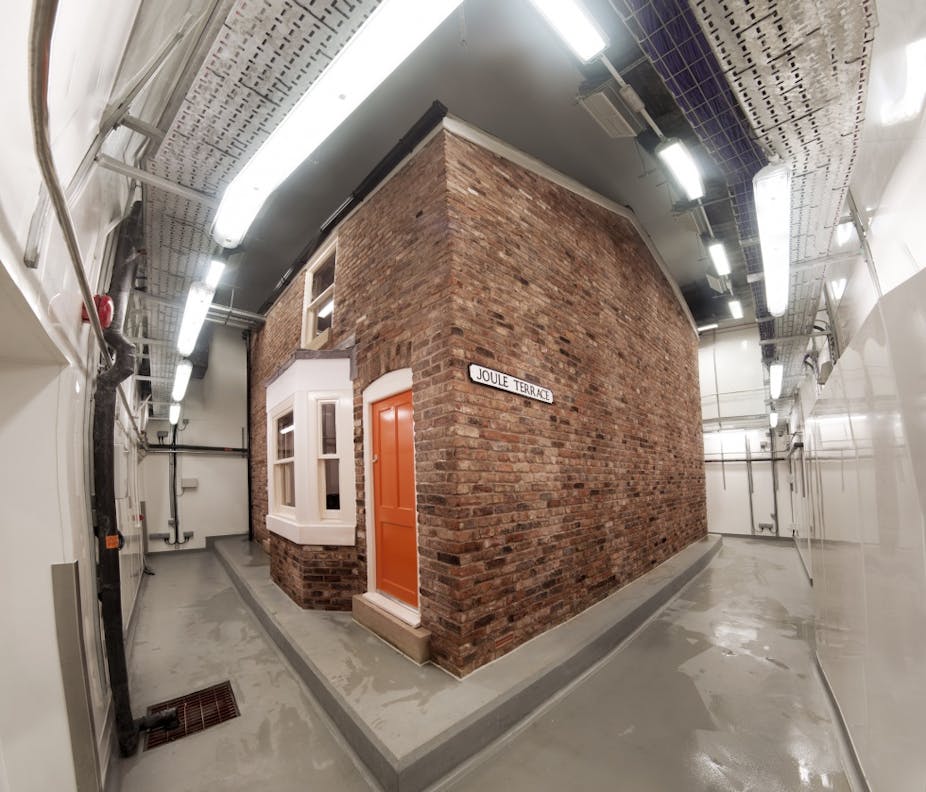Britain’s housing stock is old and leaky. The vast majority fails to meet modern energy efficiency standards, is responsible for over a quarter of the nation’s greenhouse gas emissions, and is often very expansive to heat.
Plagued by problems of century-old design and building techniques, such as solid walls (less able to retain heat than modern cavity walls) and draughty gaps around windows and doors, the worst examples are referred to as “hard to treat”. These are the buildings the energy companies must help insulate under the government’s ECO scheme, costs which the Big Six claim are pushing up bills. But whoever pays the bill, the government needs to address these buildings if they are to hit its carbon emissions reduction targets.
But while these schemes aim to improve buildings and bring down energy use, there’s been little effort to change householders’ behaviour to do the same. The University of Salford’s Energy Hub research group has been investigating this with its ground-breaking Energy House. Researchers study how technology like insulation can help reduce fuel poverty and reduce carbon emissions, but also involve psychologists to examine behaviour patterns to reveal other ways people can reduce their energy bills.
Fictional couples, a real house
The house is a traditional 1900s, end-terrace, two bedroom property inside a climate controlled chamber. Representative of 21% of Britain’s housing stock, it was rebuilt inside the lab using the traditional methods of the time, including lime mortar, and lath and plaster ceilings.
The temperature within the chamber can be controlled from -10°C to +30°C, and its humidity can be controlled from 10% to 80%. The Energy House (1, Joule Terrace) has solid brick external walls, a mixture of brick and plasterboard internal walls, single-glazed sash windows, and timber floors. The loft is insulated with typical 100mm mineral wool, and the house is decorated, furnished and to all intents and purposes fully functional. There is an adjoining property also present to one side of the Energy House, an empty insulated space used to house monitoring equipment. Throughout the house is fitted with numerous sensors and devices to monitor the temperature.
Our experiments measure the effects on energy consumption of typical householders’ behaviour in the home. We simulated three days in the life of two hypothetical couples living in the home, who keep typical hours but live in different ways.
The two couples’ habits were based on data and anecdotes supplied by the Energy Saving Trust and National Energy Action. Ern and Grace are energy savers – well aware of how to set timers and thermostats, understand that it’s important to keep doors and windows closed as much as possible, and maintain good habits and aren’t wasteful when cooking and washing, or when heating and lighting the building. In other words, they’re mindful of costs.
Bern and Savannah on the other hand like to run their home hot, keep thermostats and radiators turned up and run the boiler all day. They often leave windows and doors open for periods of time, and prefer baths to showers. In the kitchen, they like a full kettle of boiling water even for a single cup, and the oven gets left on longer than necessary. In short, they don’t care.
Heat adds up to cold, hard cash
The data collected in real time from devices monitoring electricity, gas, temperature and humidity revealed just how much of a cash difference small changes could make. Mindful Ern and Grace used 213.3kWh in three days, made up of 10.3kWh electricity and 203kWh gas. Wasteful Bern and Savannah used 355.28kWh in three days, 28.28kWh in electricity and 327kWh in gas – two thirds more.
Assuming most people turn on their heating in October and off in March, and using prices from British Gas in May this year (gas at 4.27p/kWh, electric at 12.797p/kWh), this runs to costs of more than £440 during the colder months of the year. Add in non-heat related savings from better electricity use as well, and this would likely push the annual saving to over £600. As it gets colder this winter, that – an annual saving on an average energy bill of almost 50% – is something to get hot and bothered about.

